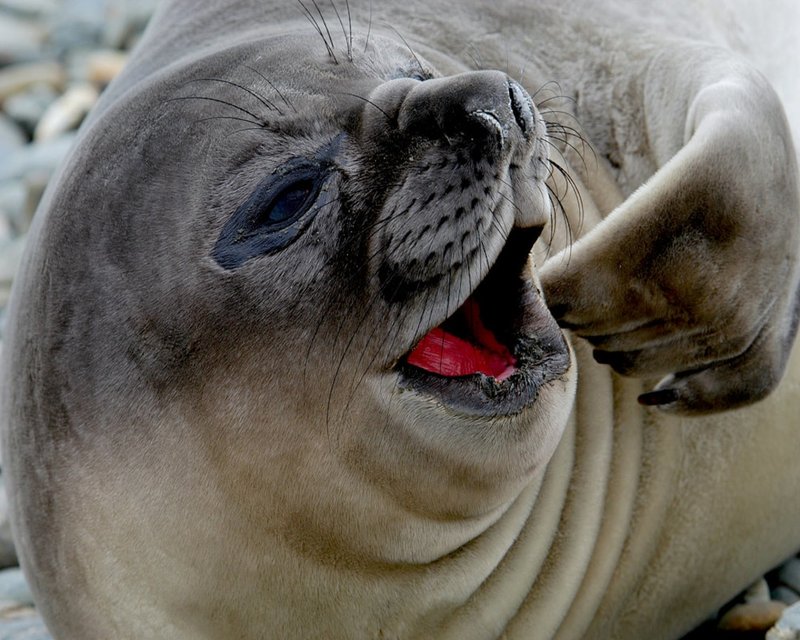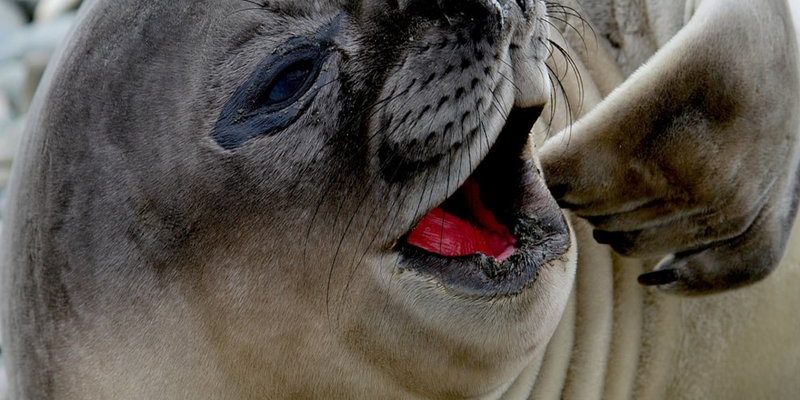
Elephant seals are like the mysterious introverts of the marine world. With their large, blubbery bodies and distinctive trunks, they might seem intimidating at first glance. Yet, dive a bit deeper, and you’ll discover a world of interesting behaviors and cultural narratives attached to these animals. In this article, we’ll explore prevalent myths, fascinating cultural beliefs, and the real facts that give you a clearer understanding of these amazing creatures. Let’s set sail into the depths of elephant seal knowledge!
The Size and Strength of Elephant Seals: What’s the Real Story?
One of the biggest misconceptions about elephant seals is their size and strength. You might hear stories about them being the largest seals in the world, and honestly, that’s not just an exaggeration. Males can weigh up to 4,500 pounds, and their length can reach nearly 20 feet! To put that in perspective, that’s like having a small car lounging on the beach.
Their size isn’t just for show. Males use it during mating season to compete for females, often engaging in fierce battles that can be quite dramatic. You might picture this as a heavyweight boxing match—lots of blubber and noise but also a true display of power. However, it’s important to note that females are much smaller, weighing around 1,500 pounds, yet they’re equally fascinating. They give birth to pups on land, nurturing them while also bringing life into the world, which is a strong reflection of their resilience.
Why Size Matters in the Animal Kingdom
You might be wondering why size is such a big deal in the animal kingdom. Well, it plays a crucial role in survival and reproduction. In the case of elephant seals, their size helps them ward off predators and compete for mates. Larger males typically get better access to females, passing on their genes to the next generation. This is nature’s way of ensuring that the strongest traits are preserved, painting a picture of evolution in action.
Myth: Elephant Seals Are Aggressive Creatures
Another common myth surrounding elephant seals is that they are aggressive and dangerous. While it’s true that males can be a bit territorial during breeding season, they are not naturally aggressive towards humans. Think of them more like a grumpy cat—if you give them space, they’ll probably ignore you.
Most of the time, elephant seals are just giant blobs of blubber, lounging on beaches or floating serenely in the water. When you watch them, you might notice how they interact in a surprisingly gentle manner, especially with their pups. Observing these seals peacefully interacting debunks the myth that they are all bluster and no heart.
The Reality of Their Behavior
The truth is that elephant seals are typically more curious than aggressive. When they do feel threatened, they’re likely to shuffle back into the water rather than confront a perceived danger. Their behaviors showcase an interesting balance—large and formidable yet surprisingly gentle. Recognizing this can change our perspective of them from fear to fascination.
Cultural Beliefs and Their Impact
Elephant seals have sparked various cultural beliefs throughout the years. In some coastal communities, local fishermen view them as a sign of good fortune. The sighting of a herd of elephant seals lounging on the beach is often associated with an abundance of fish in the sea. This connection to luck reflects how these animals are woven into the local fabric of life.
On the flip side, some stories cast them as symbols of environmental change. Their populations are indicators of marine health; when elephant seals thrive, it often means the ecosystem is balanced. Observing them can lead communities to think about conservation and the need to protect their habitats. This highlights the way cultural beliefs can shape our understanding of wildlife and conservation efforts.
Folklore and Storytelling
In many cultures, animals often symbolize various human traits or experiences. Elephant seals have made their way into folklore, representing resilience and adaptability. Consider a tale where a young seal learns to navigate the treacherous seas, embodying the importance of growth and surviving against the odds. These narratives can instill a sense of connection with nature and encourage respect for these magnificent creatures.
Environmental Challenges: Myths vs. Facts
You may hear that elephant seals are invulnerable and resilient beings, but that couldn’t be further from the truth. Like many marine animals, they face significant challenges due to climate change, pollution, and habitat loss. The story of their survival is one of both triumph and struggle.
While they do have physical adaptations for surviving harsh conditions, they’re not immune to the impacts of a changing environment. Increased ocean temperatures affect their food sources, causing shifts in their migratory patterns. This can lead to challenges in breeding and raising their young. The myths surrounding their resilience can sometimes downplay the urgency of conservation efforts.
What You Can Do
Understanding the realities of their situation can inspire action. Whether it’s supporting marine conservation organizations or participating in beach clean-ups, every little bit helps. You might even consider sharing what you’ve learned about elephant seals with friends; education is a powerful tool in protecting these animals.
Elephant seals are much more than their size or the myths surrounding them. They represent a blend of strength, vulnerability, and cultural significance. By understanding the truth—about their behavior, cultural beliefs, and environmental challenges—we can foster a greater appreciation for these magnificent creatures.
So, when you hear stories about elephant seals, remember there’s often more beneath the surface. Just like open water hides a vibrant world of marine life, there’s depth to the narrative of the elephant seal that deserves to be explored and cherished. Whether you encounter them on a beach or a documentary, take a moment to appreciate the truth of their majestic existence.

